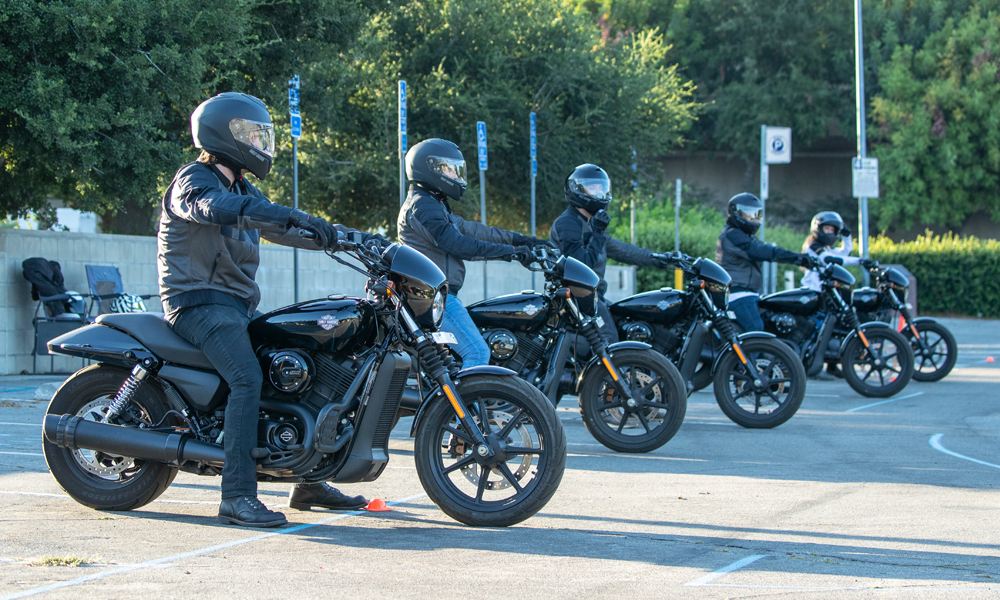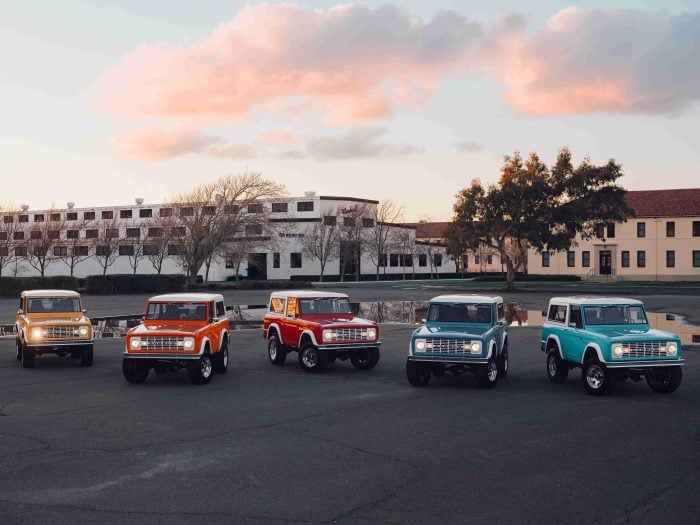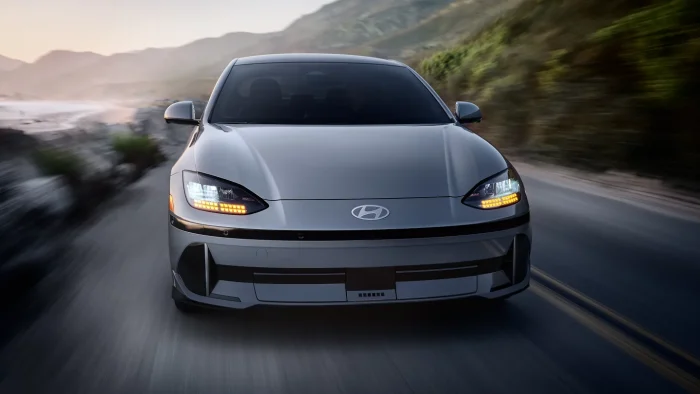There is something so unequivocally cool about learning to ride a motorcycle. Perhaps it is because of my idolization of James Dean during my formative years, or perhaps because I gave up smoking this year but still want to look like a badass, but either way, I wanted to learn to ride a motorcycle for completely egotistical reasons. But let’s face it — with gas prices on the rise and an entire Summer still before me, there really wasn’t a better time than now to take some lessons.
With this in mind, I flew to Los Angeles to attend the Harley-Davidson Riding Academy. Being able to take part in the training process with the OG’s of the industry felt like the right decision. While many DMVs around the country offer safety courses (in fact, this one was in partnership with the California Department of Motor Vehicles), I wanted to have the backing and knowledge — and let’s face it, nice leather jackets — of the Harley team.
And so, having only the experience of a hand-me-down Schwinn to guide me on how to handle anything two-wheeled, I woke up at 4:30 a.m. one Tuesday morning and tried to learn to ride a motorcycle. Here, I’ll share with you some of the things I learned during the two-day course.
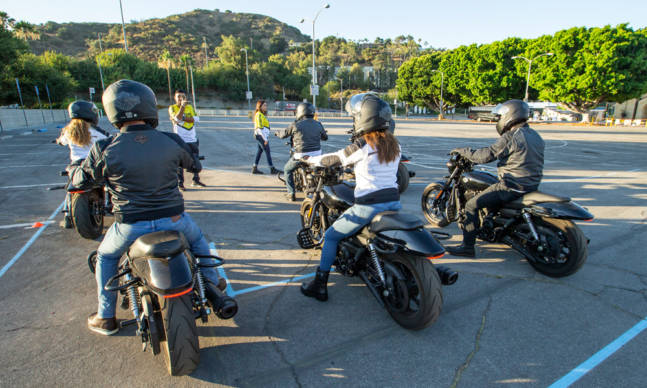
Step One: Mental Preparation
Prior to the practical class, we had an instructional lesson over Zoom. While it was taken from the comfort of the freon-chilled Kimpton, I couldn’t help but feel myself getting a little flustered, a little nervous. I checked my likeness in the corner of the Zoom meeting — could others see the small amount of perspiration on my forehead?
The fact of the matter was this: I hadn’t considered the danger of what I had gotten myself into. In fact, I was so enamored with my newfound passport to badassery, that I had completely ignored the fact that I would have to, well, ride a motorcycle. Learning about the statistics of accidents, the possibilities of injury, the reality of having not-so-great healthcare, all of this had my head swimming.
If I could go back, I would have prepared myself better mentally. This would have included watching YouTube videos of instructions on riding. Perhaps talking to a few people when I was pumping gas before they revved off into the sunset and I was left filling my SUV. Anything to have not been at the eleventh hour with the realization of Oh shit – you’re really doing it now!
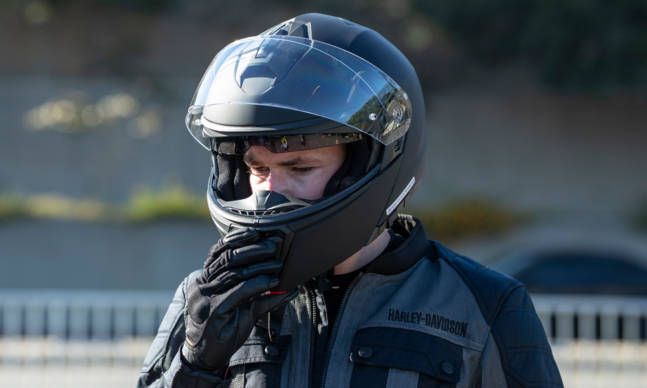
Step Two: Wear the Right Motorcycle Gear
Before ever stepping on a motorcycle, get the right gear. Someone from Harley put it this way: What is the price you value your head, your neck, your hands at? Now, buy the gear that’s correspondent with whatever price you had in mind.
I live in rural Pennsylvania where riders tend to be a little creative with their idea of appropriate gear. This might include (but is surely not limited to): bandanas, flip-flops, bathing suits, and the occasional Steelers jersey. I knew that I wanted a little more protection than that and, thankfully, the CA DMV agreed. We were required to wear an appropriate level of gear: a helmet, gloves, long-sleeve shirt or jacket, jeans (no holes, please!), and boots that covered the ball of one’s ankle.
With this in mind, dubious that the California sun wouldn’t fry me before the training did, I stepped into the community college parking lot where the course was taking place. Within minutes, as we stepped onto the bikes, it was evident how important the proper clothing was. Any slip-up could end badly and for me, it happened twice. Once, the visor of my helmet flung off when my head hit the pavement. I got up with nothing but a bruise on my hip and a scratch on my elbow (sadly, it’s healed fully and I don’t even have a cool scar to prove it!).
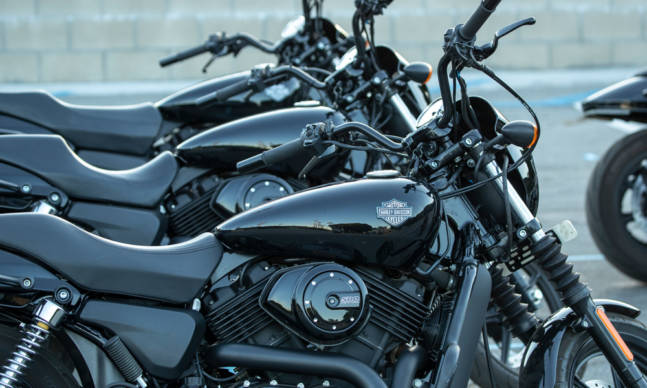
Step Three: Know the Motorcycle
Foolish and naive of me, I thought a motorcycle would be most analogous to an e-bike, which I had ridden exactly twice before. Instead, I should have thought of it as its own species of vehicle entirely. Yes, it has a handle and gears, a break, and some wheels, but that’s about where the similarities stopped for me.
The controls and breaks of a motorcycle are split up into quadrants to match the four parts of your body with the most interaction with the bike, your hands, and feet. On the bikes we used in the motorcycle class, which I believe to be standard for most manual motorcycles, your feet and hands would be in control of the following (notwithstanding things like the engine switch, horn, and all that).
Left Hand
This is the clutch side of the bike. Having never driven a manual car, I was frantically Googling what the hell a clutch was on my Uber ride to dinner the night before class began. In the most basic of terms, a clutch allows power to be applied gradually when a vehicle is starting out and interrupts power to avoid gear crunching when shifting. It’s important and not coordinating correctly can cause the bike to stall. I know this from experience — I had a lot of experience with stalling, I’m not embarrassed to say.
Right Hand
Here, we focused on the throttle and extending my fingers up a bit to the lever, and I could also control the front brake, too. I was shocked by how sensitive the throttle was, forcing me to keep relaxed. I have ridden horses before and was often told that the animals sense fear. I could say the same for a motorcycle, which seemed to react to even the slightest changes in my body. If my shoulders tensed, the bike would speed up. If I took my eyes off the path, I’d instinctively slow down.
Left Foot
This is going to be the gear shift. Using your foot, you kick up or down to shift gears (or to go into neutral). The explanation on shifting gears sounds like baloney (“You’ll just feel it!”), but it is a sensation that has to be experienced to understand. There is a sort of dialogue one has with the motorcycle, if the engine sounds high, shift higher. If the engine sounds low, shift lower, as a basic rule of thumb. What you’re doing is working with the engine against various environments like speed, road conditions, and even elevation. And, get this – you have to shift gears by kicking your left foot into the proper gear, hold in the clutch, and take your hand off the throttle in a fluid motion. It’s a choreography I wasn’t that good at. Pay attention to the instructor, my friend.
Right foot
This one is easy. It’s the rear brake pedal. No explanation is needed and I can confidently say this was the one I remembered the best.
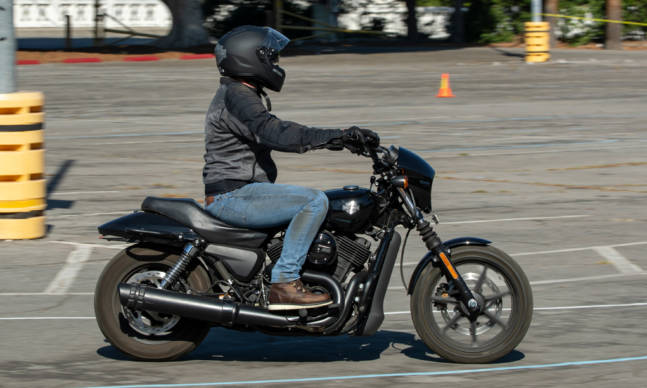
Step Four: Understand the Basics
Look, I’m no expert here. I’m going to parrot some of the things that the instructors taught me. And since I wasn’t the best student in the group, I’m a firm believer here of the adage, “Those that can, do; those that can’t, teach.”
But taking it slow, at this stage in your training, is very much key. Like I mentioned above, we practiced in a parking lot and this is probably the standard arena for most newbies. It’s an open, paved area to mess up in. Doing drills from point A to point B will get you the general feel of the throttle and brake, two things that, even though they’re the basics, are key to any successful ride.
Gear changes will happen as you go a little faster. The speed you go will be commensurate with the gear you want to be in. Again, because of the intricacies of shifting, this is something that would best be (in my opinion) studied in theory and then put into practice.
The extent of my lessons ended at turning and navigating between the large traffic cones that made up the obstacle course of our lessons. Turning, I will be honest, gave me the most trouble. It was due to the fact that I was nervous. I’d overanalyze the turn, which would then cause me to tense up. On two occasions I tenses up, which meant my hand gripped the throttle tighter. To compensate for this, I hit the brake while in the turn. It wasn’t pretty. I wasn’t happy, but I knew I wasn’t ready to be on the road until I could master the skill — not many roads are straight lines, unfortunately.
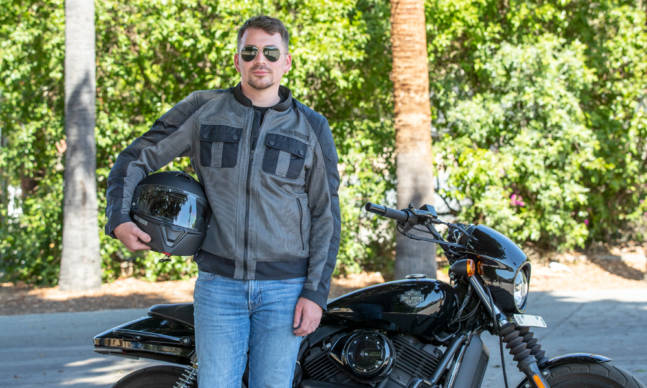
Afterthoughts
For me, I ended the Academy understanding the basics, but also understanding my shortcomings as a rider. I was in control of 500 pounds of metal, roaring at me, and totally exposed to the consequences of myself and others. I left the Academy not totally road-ready, but not ready to quit, either. In fact, I believe that I achieved what the class was meant for: an introduction to riding motorcycles for a beginner like me. The circumstances of the class can’t mimic the reality of a highway, but if I’m ever at a gas station and I see another guy on his Hog, I won’t be so shy anymore to give him a nod or, better yet, throw a peace sign, just like the pros do.
Photography by Kevin Wing Photography

